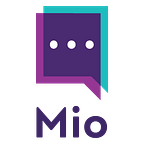How to Migrate from Slack to Microsoft Teams (If You Really Need To)
If you’ve invested in Microsoft Office 365, are upgrading from Skype for Business or simply adding Microsoft Teams into your collaboration strategy, you probably think you need to migrate from Slack to Microsoft Teams.
Most early adopters of collaboration tools started their strategy with Slack. It was the first app to introduce a new way of working through digital messaging in real-time.
However, as the years have passed, many apps like Slack have surfaced.
If you’re thinking about migrating from Slack to Microsoft Teams, here’s what you need to know.
1 — Before you migrate from Slack to Teams, know what you’re getting from Microsoft Teams
Adoption is essential. Employees must know the positive features that they can expect. For instance:
- If your team is already using Office 365, they’ll be familiar with the Microsoft brand and ecosystem
- Teams has many of the features that Slack offers, including instant messaging and file sharing
- Microsoft Azure information protection combined with Office 365 data loss protection keeps your files safe
- Microsoft Teams gives you excellent insights into your employees’ behavior through the Office 365 activity API
2 — Map how you plan to migrate from Slack to Microsoft Teams
Once your employees understand the kind of experience they’ll get from Microsoft Teams, it’s time to prepare them for migration.
One way to do this is to help them understand how their collaboration environment will change.
For instance, Slack channels are responsible for hosting most of the conversations between team members.
Slack channels can be mapped and uploaded to Microsoft Teams, giving you similar experiences from your discussions.
The main difference is that these “channels” are known as teams instead.
Like Slack, Microsoft Teams has both public and private teams available depending on the kind of conversations your users want to have.
Slack also offers discussions on private channels.
The same direct message functionality is available on Microsoft Teams.
To migrate your conversations, you’ll need to:
- Convert all Slack conversation threads into HTML
- Upload your files into the document library
- Move your data into the SharePoint document library to access via Microsoft Teams
You may also like: Ultimate Guide to External Federation in Teams
3 — Migrate files from Slack to Teams
Next, it’s time to migrate any other files (aside from your chat logs) that you need to maintain on Microsoft Teams.
Depending on how extensive certain records are, it may be difficult to upload everything you need onto SharePoint.
There’s also a risk that some of your content will be lost during the migration.
Keep in mind that Microsoft Teams’ API does not support threaded chat with delegated users. Instead, you’ll need to upload Slack posts as HTML content and post them to Teams as Root content.
Additionally, the Teams API doesn’t retain authorship information during migration.
You will not be able to maintain the timestamps on original posts for compliance purposes, or track who created the channel.
4 — Migrate apps from Slack to Teams
APIs and applications are more factors to consider when migrating from Slack to Microsoft Teams.
Although both Slack and Teams support external plugins from third-party companies, they don’t necessarily host all the same apps.
With a little luck, you’ll be able to use all of the same apps on your new Teams workplace.
If not, you may need to settle for the next best thing and spend some time teaching staff members how to use new tools.
5- Do you really need to migrate from Slack to Microsoft Teams?
Although migrating to Microsoft Teams from Slack is possible, it’s also complicated.
Tools like the Saketa Slack to Teams migration module help here.
Any transformation in your business requires a lot of time, focus and planning. You may find that trying to move your company from Slack to Teams leads to downtime, lost productivity, and unhappy employees.
After all, there’s bound to be some people in your organization that resist the change and would prefer to stick with Slack.
Even if you manage to get through your migration with little complexity, there’s no guarantee that your users will exclusively use Teams.
We’re living in the era of shadow IT, where more employees continue to use the apps they prefer — whether business leaders like it or not.
6 — Don’t migrate from Slack to Microsoft Teams unless you have to
The good news is that you don’t have to migrate from Slack to Microsoft Teams.
Just because you are implementing one app doesn’t mean you have to drop the other.
You can give your employees the freedom to use the tools they like and unlock the benefits of both apps with Mio.
With Mio, you can sync the messages and conversations from all members of your team, regardless of whether they’re on Slack or Microsoft Teams.
This way, you improve staff satisfaction by giving your people more freedom and eliminate the risks of the migration process.
Through intelligent user and channel mapping, Mio joins all your public channels in each team, obtains user information and links your employees.
As users send messages, Mio receives them as API events, which can then translate to suit the application each staff member is using.
Sound too good to be true? Check out this video of Mio in action for Slack and Microsoft Teams.
Sick of worrying about migration?
Try Mio instead.
